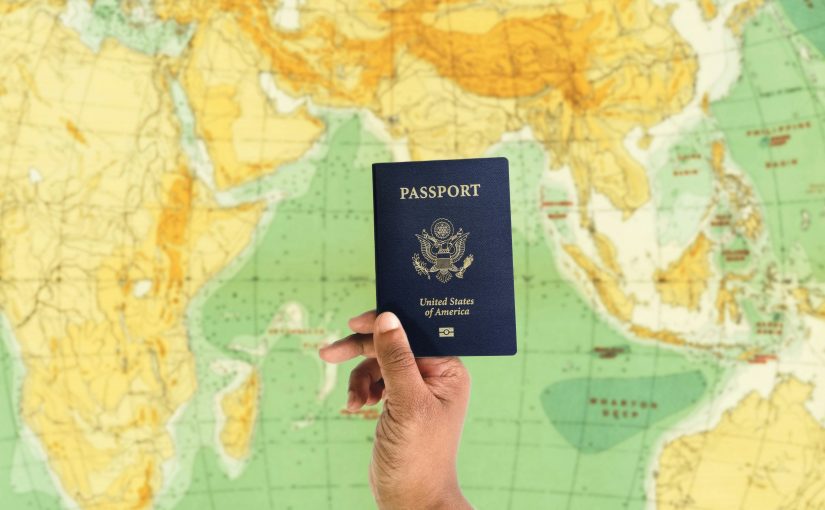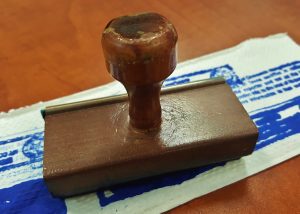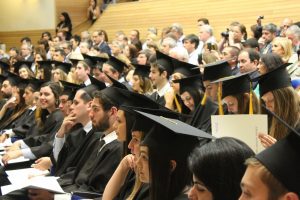
Did you know, China was the 3rd largest travel market for the US before the COVID-19 pandemic? In 2022, approximately 370,000 visitors from China arrived in the United States, representing an increase from the previous year. Before the outbreak of the coronavirus pandemic, around 2.83 million arrivals were recorded for the year 2019.
For many Chinese citizens, visiting the United States is a dream come true. Whether it’s exploring iconic landmarks like the Statue of Liberty or experiencing the vibrant culture of cities like New York and Los Angeles, the US offers a plethora of opportunities for travelers from China.
However, before you can go on your American adventure, there’s an essential step you need to take: applying for a US visa. In this blog post, we’ll walk you through everything you need to know about applying for a US visa from China, from understanding the different visa types to tips for a successful application.
Understanding US Visa Types for Chinese Applicants
The United States offers a variety of visas for Chinese citizens, each with its own purpose and eligibility requirements. Here’s a breakdown of the most common visa types, specifically tailored to US visa application China:
Tourist Visa (B1/B2)
This is the most popular visa among Chinese travelers, allowing you to explore the US for tourism or to visit family and friends. Visit the iconic streets of New York, do celebrity sightings in Hollywood, or head to the South to try some delicious Southern cuisine, all of this will happen using the tourist US visa for Chinese citizens.
A major perk for Chinese applicants is the extended validity option! By participating in the Electronic Visa Update System (EVUS), you can obtain a B1/B2 visa valid for up to 10 years. This allows for multiple entries to the US, making return trips for sightseeing or visiting loved ones much easier.
To qualify for a B1/B2 visa, you’ll need to demonstrate:
- Strong ties to China: This shows the US visa officer that you have a reason to return to China after your visit. Examples include a stable job, property ownership, or close family ties.
- Sufficient travel funds: You’ll need to prove you have enough money to cover your travel expenses in the US. This can be done through bank statements or proof of sponsorship.
Student Visa (F-1)
The US education system holds immense prestige for students worldwide, and Chinese students are no exception. An F-1 visa unlocks the door to this academic world, allowing you to pursue your educational goals at a US university, college, or even a language program.
The I-20 form is a crucial document for securing your F-1 visa. This form acts as proof of your acceptance and eligibility to study at a US educational institution.
Here’s the process to obtain it:
- Research and Apply to US Institutions: Choose universities or colleges that align with your academic interests. Research programs, faculty expertise, and admission requirements. Complete the application process, including standardized tests and transcripts, as required by each institution.
- Receive Acceptance and I-20 Form: If accepted, your chosen institution will send you an official acceptance letter and the I-20 form. This form will contain details about your program of study, estimated duration, and financial support information.
Once you have the I-20 form, it’s time to prepare for the F-1 visa interview. This crucial step allows the visa officer to assess your intentions and eligibility.
Here’s how to shine during your interview:
- Genuine Intent to Study: This is the key factor. Be prepared to discuss your academic goals in detail. Why this particular program? What are your career aspirations after graduation? Research the faculty and highlight how their expertise aligns with your interests.
- Strong Academic Background: Present your transcripts, standardized test scores, and any academic awards or achievements to showcase your academic potential.
- Financial Sustainability: Explain how you plan to fund your studies. This could involve scholarships, financial aid from the US institution, personal savings, or sponsorship from a family member. Present bank statements or sponsorship letters as proof.
- Plans for Returning to China: Demonstrate that you intend to complete your program and return to China upon graduation. This might involve discussing future career options in China or family ties that draw you back.
Business Visa (B-1)
For Chinese entrepreneurs and professionals eyeing the US market, the B-1 visa opens doors to a wealth of opportunities. What’s reassuring is the B-1 visa’s popularity and success rate among Chinese applicants. Last year, a whopping 91% of B visa applications from Chinese citizens were given the green light, showing that US authorities are welcoming towards Chinese business travelers.
And it’s not just about the visa itself; it’s about the growing ties between China and the US. The increasing number of visas issued by US consulates and the embassy in China tells a story of strengthening bonds and mutual interests. In FY 2014, over 1.65 million nonimmigrant visas were issued, marking a substantial 20.5% rise from the previous year.
What Business Activities Can You Pursue with a B-1 Visa?
This visa caters to a range of business-related purposes specifically relevant to Chinese businesspeople:
- Conferences and Trade Shows: The US hosts numerous industry conferences and trade shows, serving as valuable platforms for networking, exploring new technologies, and staying current with market trends. Attending these events with a B-1 visa allows you to connect with potential US business partners and expand your network.
- Contract Negotiations and Business Meetings: Negotiating a crucial contract with a US company? The B-1 visa facilitates face-to-face meetings and discussions, allowing you to build rapport and finalize agreements that benefit both parties.
- Exploring Business Partnerships and Investments: The US offers a dynamic business landscape. You can utilize the B-1 visa to explore potential partnerships or investment opportunities with US companies.
- Short-Term Training Programs: Does your company require specialized training for its staff? The B-1 visa allows your employees to participate in short-term training programs offered by US businesses or institutions.
While a letter of invitation isn’t mandatory for all B-1 visa applications, it can significantly strengthen your case, especially for specific activities:
- Visiting a Specific US Company: If you’re traveling to the US to meet with a particular company or attend a conference hosted by them, securing a formal letter of invitation from that company demonstrates the legitimacy of your visit and purpose.
- Negotiating Contracts or Business Discussions: A letter from your US business partner outlining the purpose of your visit and the nature of your discussions adds credibility to your application.

Work Visa (H-1B, L-1)
Unlike other visa categories, securing a work visa in the US hinges on sponsorship from a US employer. This means a US company must be willing to go through the process of petitioning for your eligibility to work in the US on their behalf.
The two most common work visa options for Chinese professionals are:
- H-1B Visa: This visa caters to specialty occupations requiring a high level of theoretical or technical knowledge. This could include engineers, scientists, IT professionals, and certain types of management positions.
- L-1 Visa: This visa is designed for employees of international companies with established branches, subsidiaries, or parent companies in both the US and China. It allows for intracompany transfers of personnel holding specialized knowledge or managerial skills.
Other Visa Categories
The US visa for Chinese citizens system caters to a variety of purposes beyond tourism, business, and work. Here’s a brief mention of some additional visa categories that might be relevant for Chinese applicants:
- J-1 Exchange Visitor Visa: This visa facilitates participation in cultural exchange programs, internships, and research opportunities in the US.
- Q1/Q2 Family Visas: These visas are for family members of US citizens or permanent residents.
- F-3 Student Visa: This is for students enrolled in vocational training programs not leading to a degree.
- C1/C2 Transit Visas: These allow for a brief stay in the US while traveling to another country.
- Medical Treatment Visa: This visa caters to individuals seeking medical treatment in the US.
The Application Process for Chinese Applicants
Obtaining a US visa can be an exciting yet scary experience, especially for Chinese applicants. This step-by-step guide simplifies the process:
The first step is figuring out which visa type best suits your needs. Utilize the US Department of State website to explore visa categories and eligibility requirements. We’ve narrowed down the available options for you above too so you can choose the right one according to your purpose of visit.
Step 1: Mastering the DS-160 Online Application Form
The DS-160 online application form is the foundation of your visa application. Here’s how to navigate it smoothly:
- Language: The form is in English. If needed, utilize online translation resources to ensure accurate completion.
- Reliable Connection: Use a stable internet connection to avoid disruptions during the application process.
- Save Your Work: The DS-160 allows you to save your progress and return later. Remember to note the application ID for future reference.
Once your DS-160 form is complete, it’s time to settle the visa application fee. US Travel Docs China accepts payments through various methods:
- Online Payment Portals: Explore the US Travel Docs China website for a list of approved online payment channels.
- Designated Bank Branches: Payments can also be made in person at designated bank branches authorized by US Travel Docs China.
Step 2: Scheduling the Visa Interview (if required)
Not all visa categories require an interview. However, if one is necessary, here’s how to schedule it:
- US Travel Docs China Online System: Use the online system provided by US Travel Docs China to schedule your interview at a US consulate or embassy in China.
- Early Bird Gets the Appointment: Due to high demand, schedule your interview well in advance to secure your desired date and time.
Step 3: Gathering Supporting Documents
Strong supporting documents bolster your visa application. Here’s a checklist to consider, with specific details for Chinese applicants:
- Valid Chinese Passport: Make sure that your passport is valid for at least six months beyond your intended stay in the US.
- Proof of Financial Stability: Demonstrate sufficient financial resources to cover your expenses in the US. This could include bank statements, employment certificates, or proof of sponsorship.
- Travel Itinerary: For tourist visas, provide a detailed itinerary outlining your travel plans in the US.
- Academic Documents: For student visas, submit your acceptance letter and academic transcripts.
- Business Documentation: Business visas might require a letter of invitation from a US business partner or company documents showcasing your purpose of visit.
- English Translations: If any documents are not originally in English, obtain certified translations.

Remember: This checklist provides a general guide. Refer to the specific visa category requirements for a complete list of required documents.
Conclusion
Obtaining a US visa from China can be a rewarding experience, opening doors to exciting opportunities. Remember, thorough preparation is key. Carefully assess your travel purpose, choose the appropriate visa type, and gather all required documents well in advance. If you have documents that need translation, consider a reputable service like TranslateSwift. We offers exceptional turnaround times, delivering one- to three-page document translations within 24 hours, with expedited options available for even faster service.
Applying for a US visa may seem daunting initially, but with careful planning and the resources provided in this guide, you can embark on your US visa journey with confidence. Remember, TranslateSwift is here to assist you with any translation needs, ensuring your application is complete and ready for success. So, order a credible translation and accelerate the process of getting a US visa from China.
FAQs – Getting a US Visa from China
Do I need to attend a visa interview for my US visa application from China?
Not all visa categories require an interview. However, some, like the F-1 (student) visa, typically do. You can find interview requirements for specific visa categories on the US Department of State website.
How can I prepare for my US visa interview in China?
Preparation is key for a successful interview. Here are some tips:
- Dress professionally and appropriately for both Chinese and US cultural norms.
- Organize your documents clearly and have them readily available.
- Practice answering common interview questions tailored to your visa category (e.g., travel plans, study goals, business purpose).
- Speak confidently and concisely, while maintaining respectful communication with the interviewer.
What can I do if my US visa application from China gets rejected?
If your visa application is denied, you will receive a document explaining the reason for the rejection. In some cases, you may be able to reapply after addressing the issues raised by the visa officer. Consider consulting with an immigration attorney familiar with US visa regulations for guidance on reapplying.
Can I apply for a US visa extension while in the US?
Under certain circumstances, you may be eligible to extend your US visa stay while already in the US. However, this process has its own set of requirements and procedures. Consult the US Citizenship and Immigration Services (USCIS) website.
How much does a US visa cost for China?
The cost of a visa for China depends on your nationality and the type of visa you apply for. If you are a U.S. citizen applying for a Chinese visa, the fee will range from $140 for a single entry visa to $68 for a multiple entry visa valid for 12 months or more.










